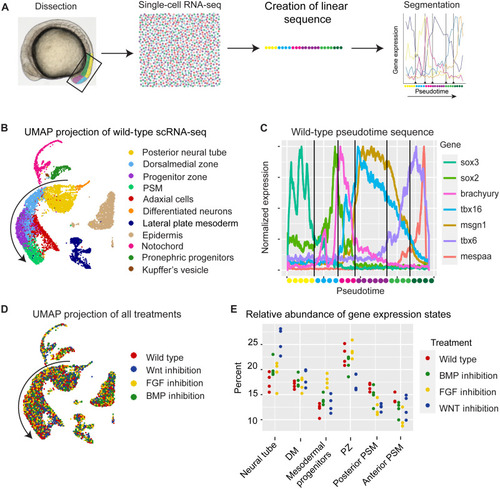- Title
-
Automated time-lapse data segmentation reveals in vivo cell state dynamics
- Authors
- Genuth, M.A., Kojima, Y., Jülich, D., Kiryu, H., Holley, S.A.
- Source
- Full text @ Sci Adv
|
Gene expression cell states in the zebrafish tailbud. ( |
|
scRNA-seq gene expression states map to the tailbud. ( |
|
Cell motion states can be defined similarly to gene expression states. ( |
|
PSM exhibits significant left-right asymmetry. ( |
|
Cell motion segmentation in embryos subject to signaling perturbations. BMP-inhibited ( |
|
PSM region cell motion dynamics after BMP, FGF, or Wnt signaling inhibition. Track statistics in ROIs of the left and right PSM after ( |
|
Summary of cell state transitions. ( |







